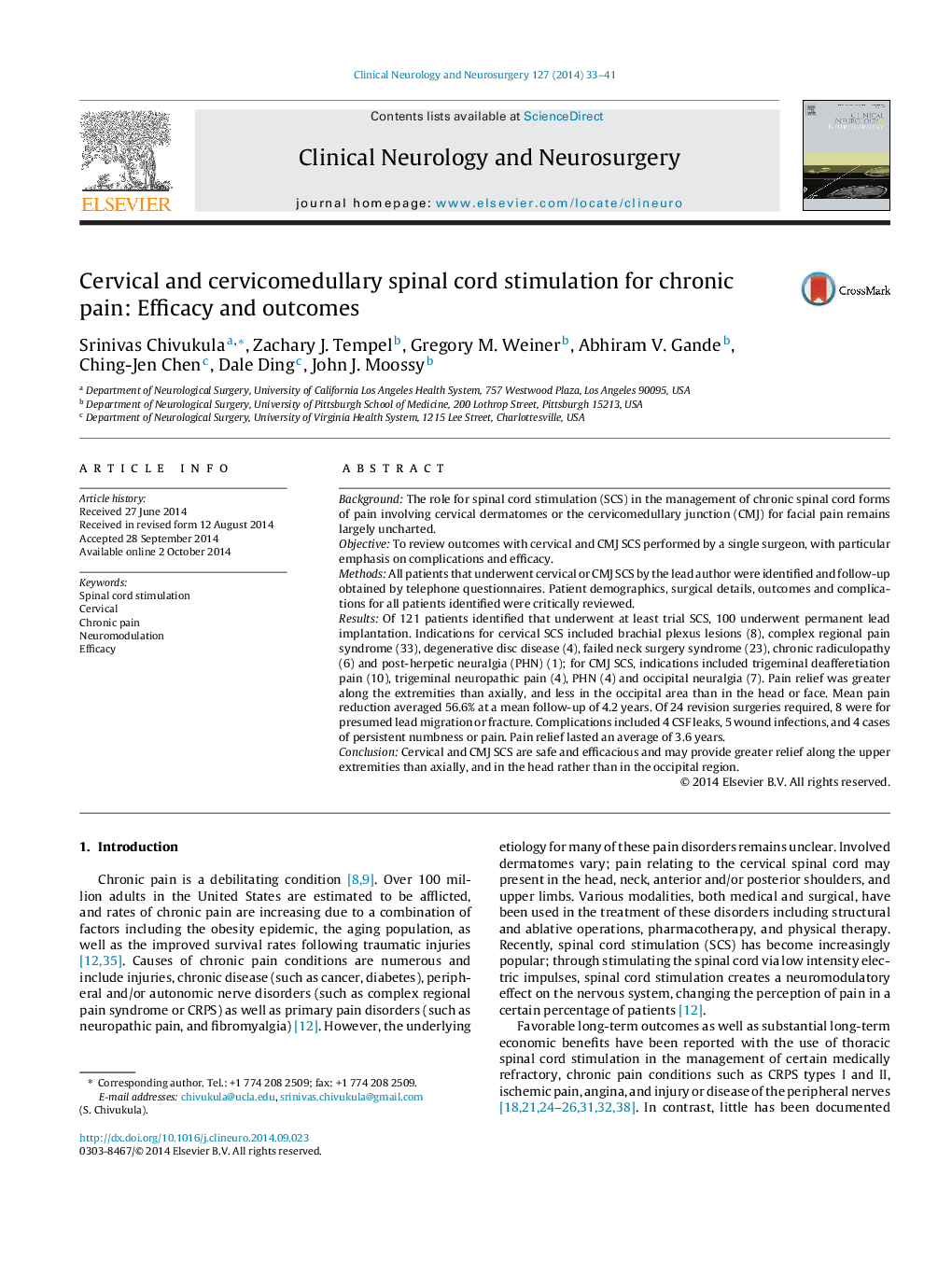| کد مقاله | کد نشریه | سال انتشار | مقاله انگلیسی | نسخه تمام متن |
|---|---|---|---|---|
| 3040052 | 1579695 | 2014 | 9 صفحه PDF | دانلود رایگان |
• Cervical and cervicomedullary junction (CMJ) spinal cord stimulation (SCS) are safe.
• Cervical SCS may provide greater pain relief along the extremities than axially.
• CMJ SCS may be most effective for head pain and less for the occipital region.
• Complications are few, and mostly include persistent pain/numbness and CSF leaks.
BackgroundThe role for spinal cord stimulation (SCS) in the management of chronic spinal cord forms of pain involving cervical dermatomes or the cervicomedullary junction (CMJ) for facial pain remains largely uncharted.ObjectiveTo review outcomes with cervical and CMJ SCS performed by a single surgeon, with particular emphasis on complications and efficacy.MethodsAll patients that underwent cervical or CMJ SCS by the lead author were identified and follow-up obtained by telephone questionnaires. Patient demographics, surgical details, outcomes and complications for all patients identified were critically reviewed.ResultsOf 121 patients identified that underwent at least trial SCS, 100 underwent permanent lead implantation. Indications for cervical SCS included brachial plexus lesions (8), complex regional pain syndrome (33), degenerative disc disease (4), failed neck surgery syndrome (23), chronic radiculopathy (6) and post-herpetic neuralgia (PHN) (1); for CMJ SCS, indications included trigeminal deafferetiation pain (10), trigeminal neuropathic pain (4), PHN (4) and occipital neuralgia (7). Pain relief was greater along the extremities than axially, and less in the occipital area than in the head or face. Mean pain reduction averaged 56.6% at a mean follow-up of 4.2 years. Of 24 revision surgeries required, 8 were for presumed lead migration or fracture. Complications included 4 CSF leaks, 5 wound infections, and 4 cases of persistent numbness or pain. Pain relief lasted an average of 3.6 years.ConclusionCervical and CMJ SCS are safe and efficacious and may provide greater relief along the upper extremities than axially, and in the head rather than in the occipital region.
Journal: Clinical Neurology and Neurosurgery - Volume 127, December 2014, Pages 33–41
